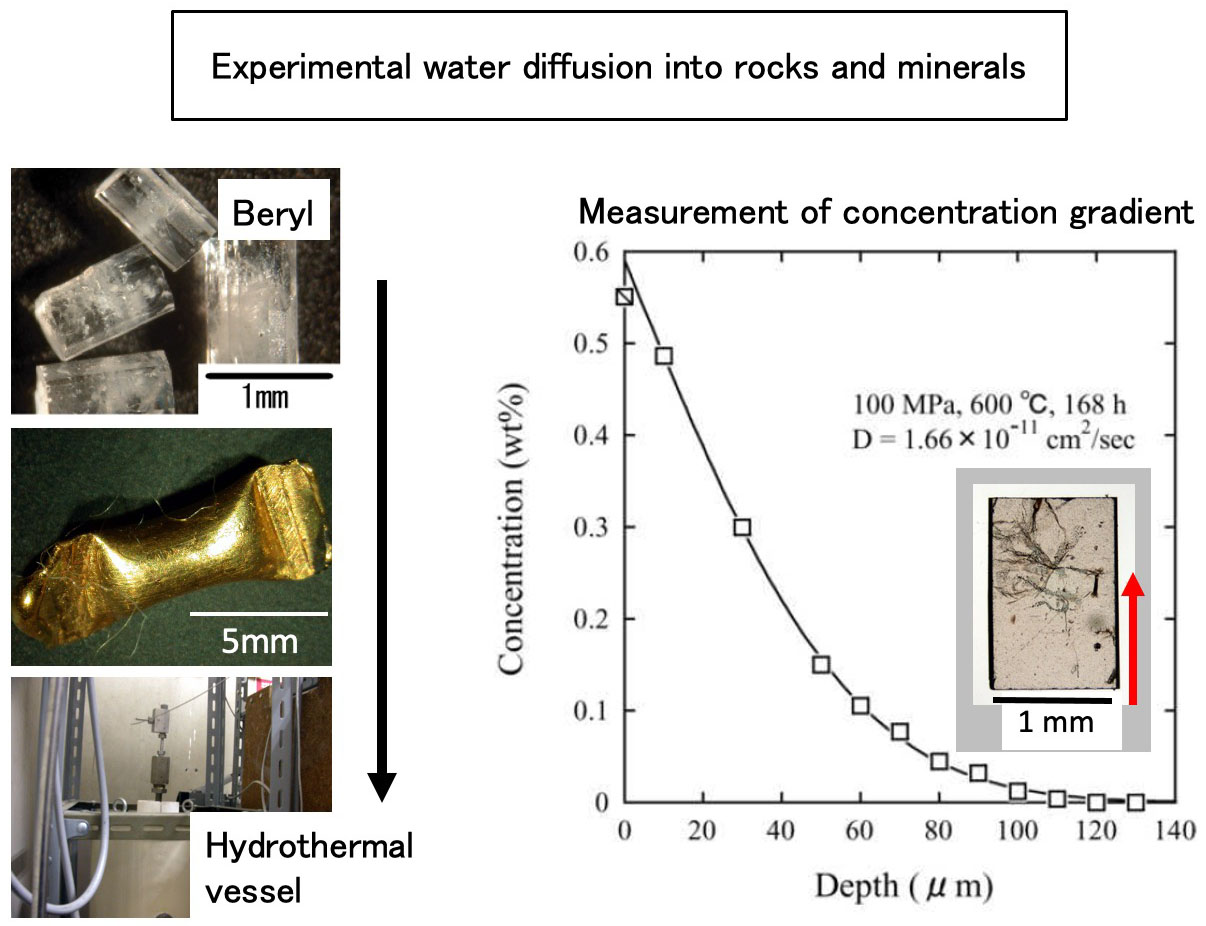Japanese/English
1. Microstructural observation of deformed rocks
+ Evaluation of deformation mechanisms
I observe microstructures of deformed rocks and evaluate grain morphologies and mineral distributions. The following images show microstructures by optical polarizing microscope (left) and backscatter electron mode of a scanning electron microscope (right) for regions composed of quartz and feldspar in a plastically deformed granitoid from an inner shear zone of the Ryoke Metamorphic Belt.
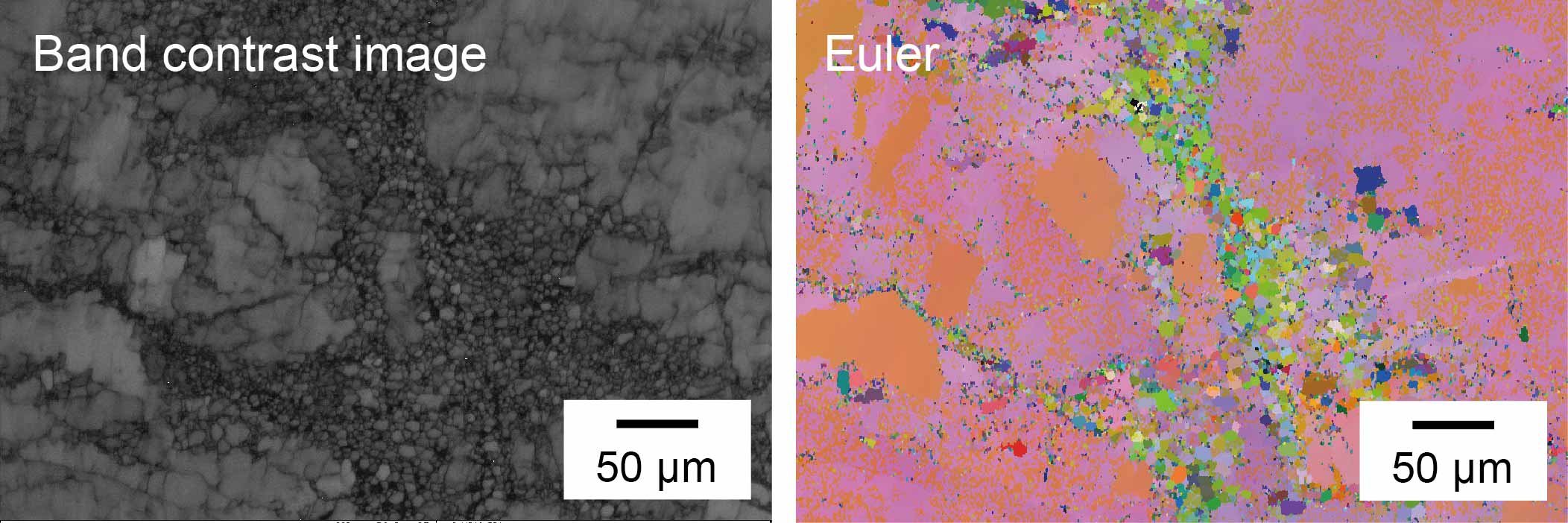
2. Mass change by development of deformation
Rocks deform in the crust under different stress, strain rate, etc and different types of deformed rocks are formed. I measure mass changes associated with different types of deformation.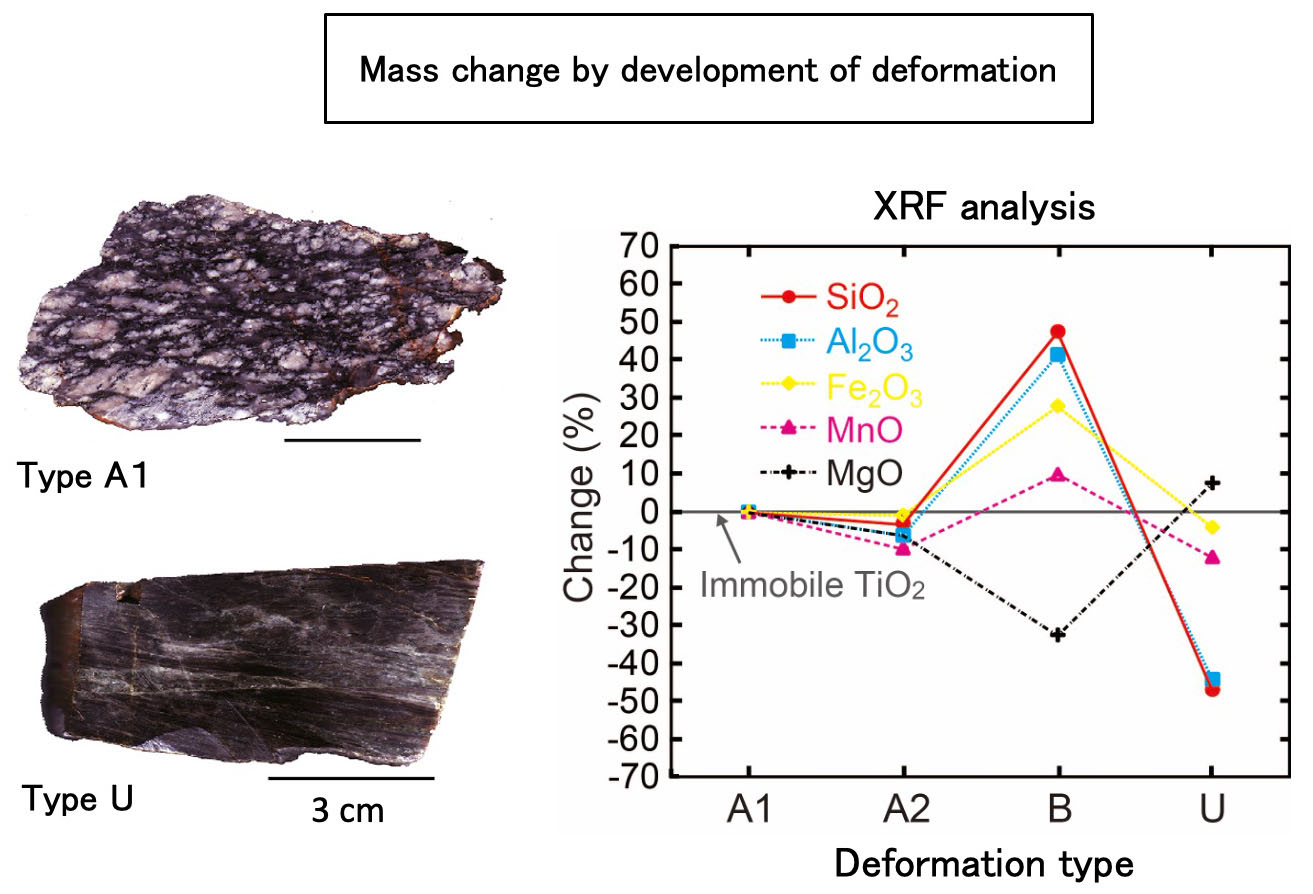
3. Determinations of rock deformation parameters
I also perform deformation experiments mainly using solid-pressure-medium (Griggs-type) deformation apparatuses. I try to duplicate microstructures seen in natural samples. I also evaluate relationships between temperature, pressure, strain rate, stress, etc. as deformation parameters. Then, I try to understand deformation properties under actual conditions of the crust.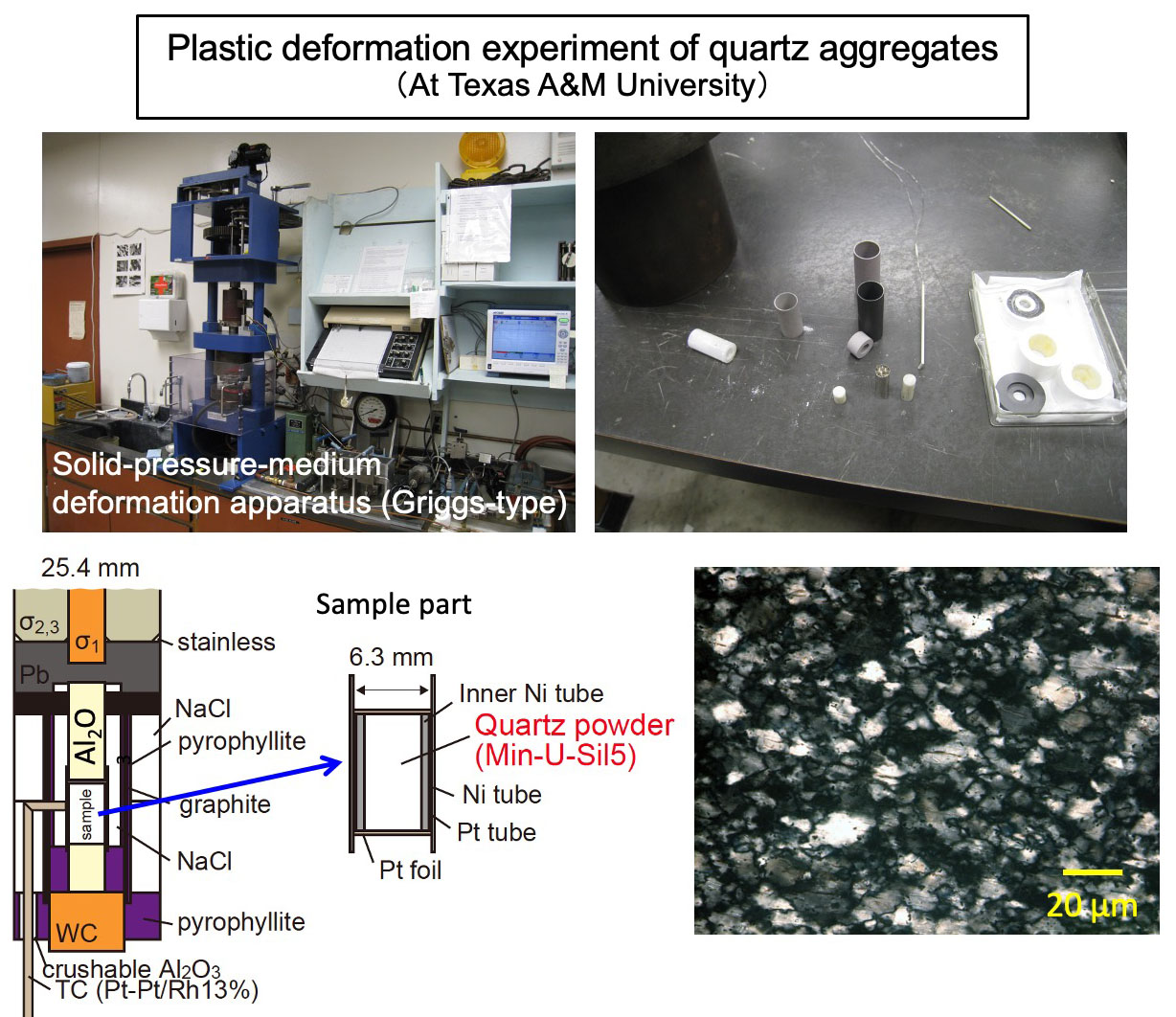
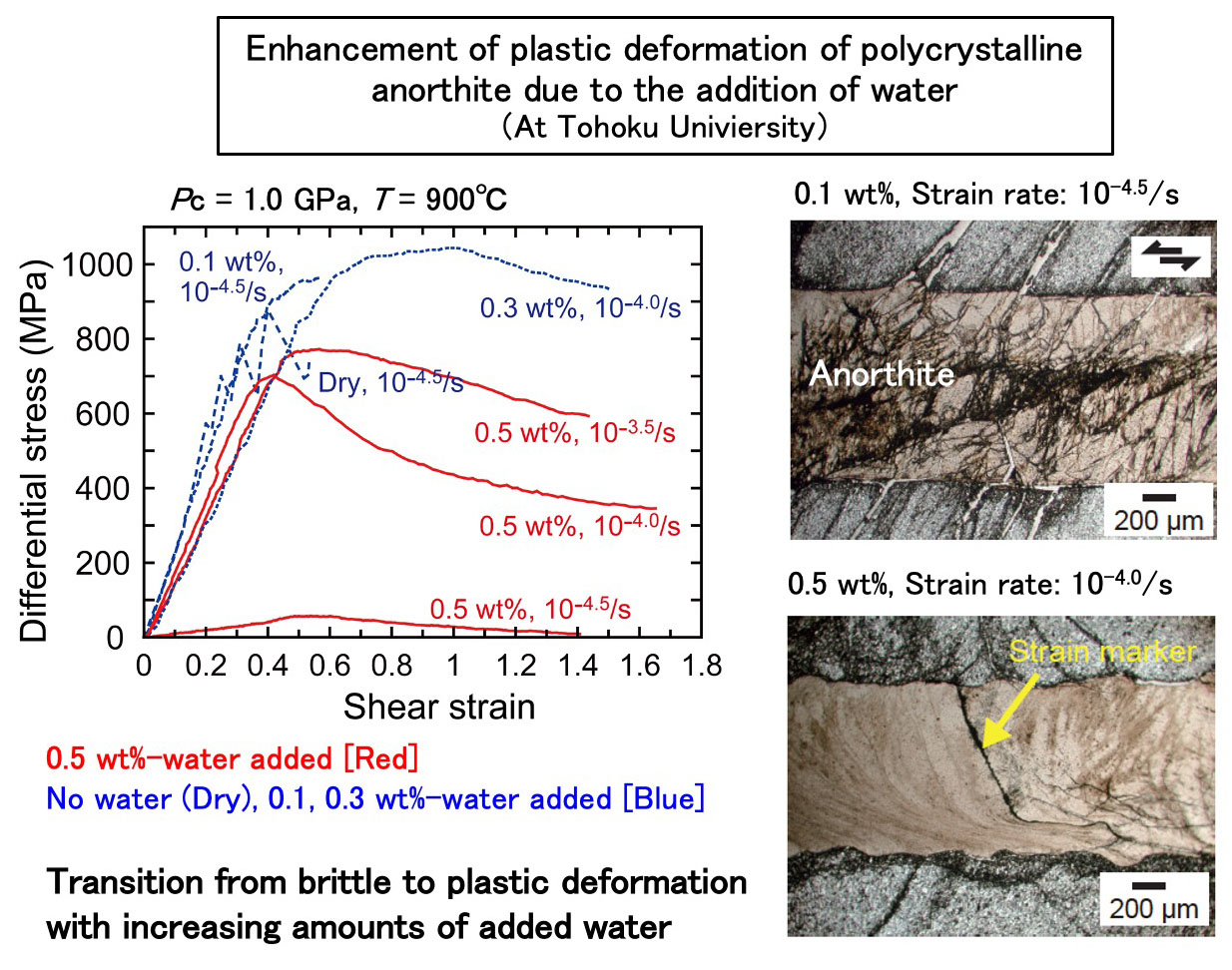
4. Evaluation of states and distribution of water in rocks and minerals
Rocks and minerals include "water" in the forms of H2O and-OH, both of which contribute to reactions and enhancement of deformation. I therefore evaluate states and amounts of water in rocks and minerals by using infrared spectroscopy.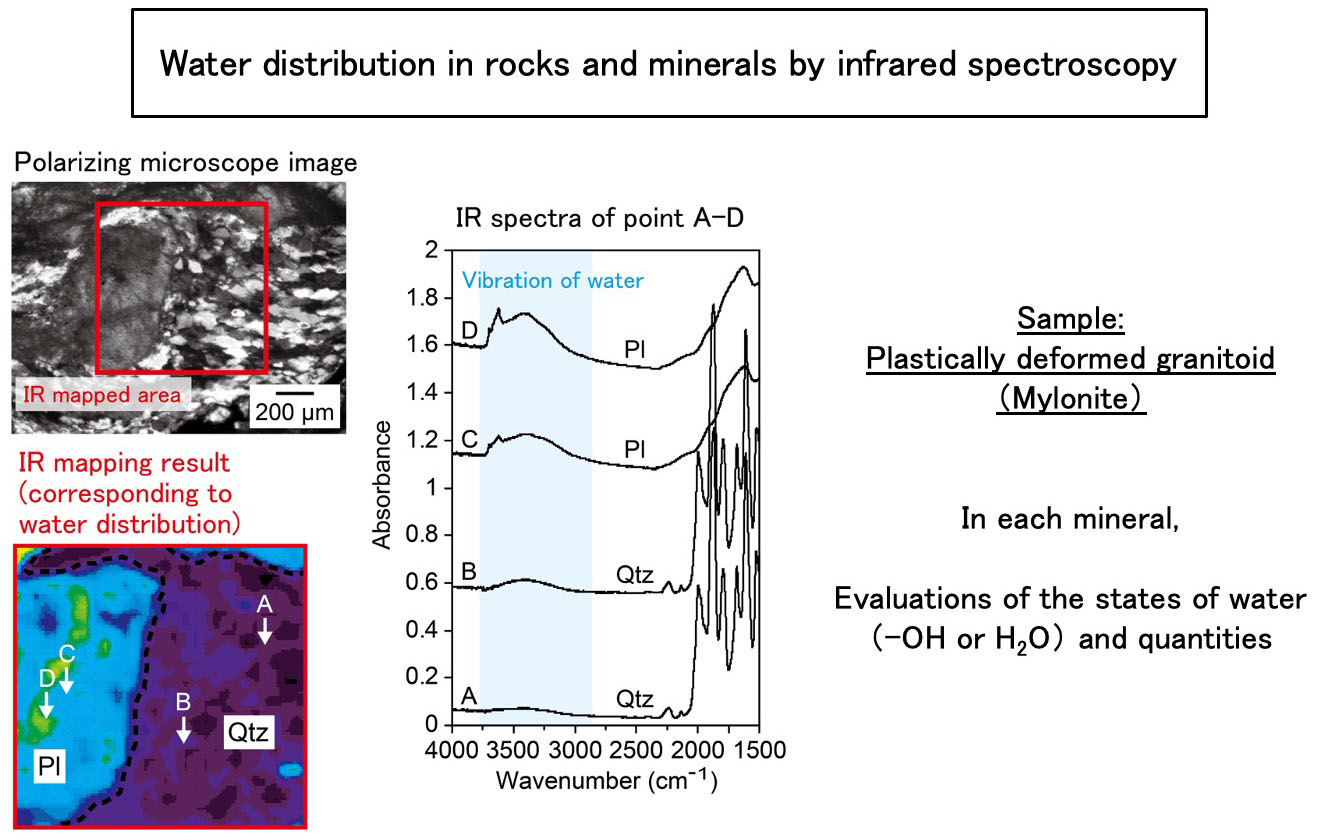
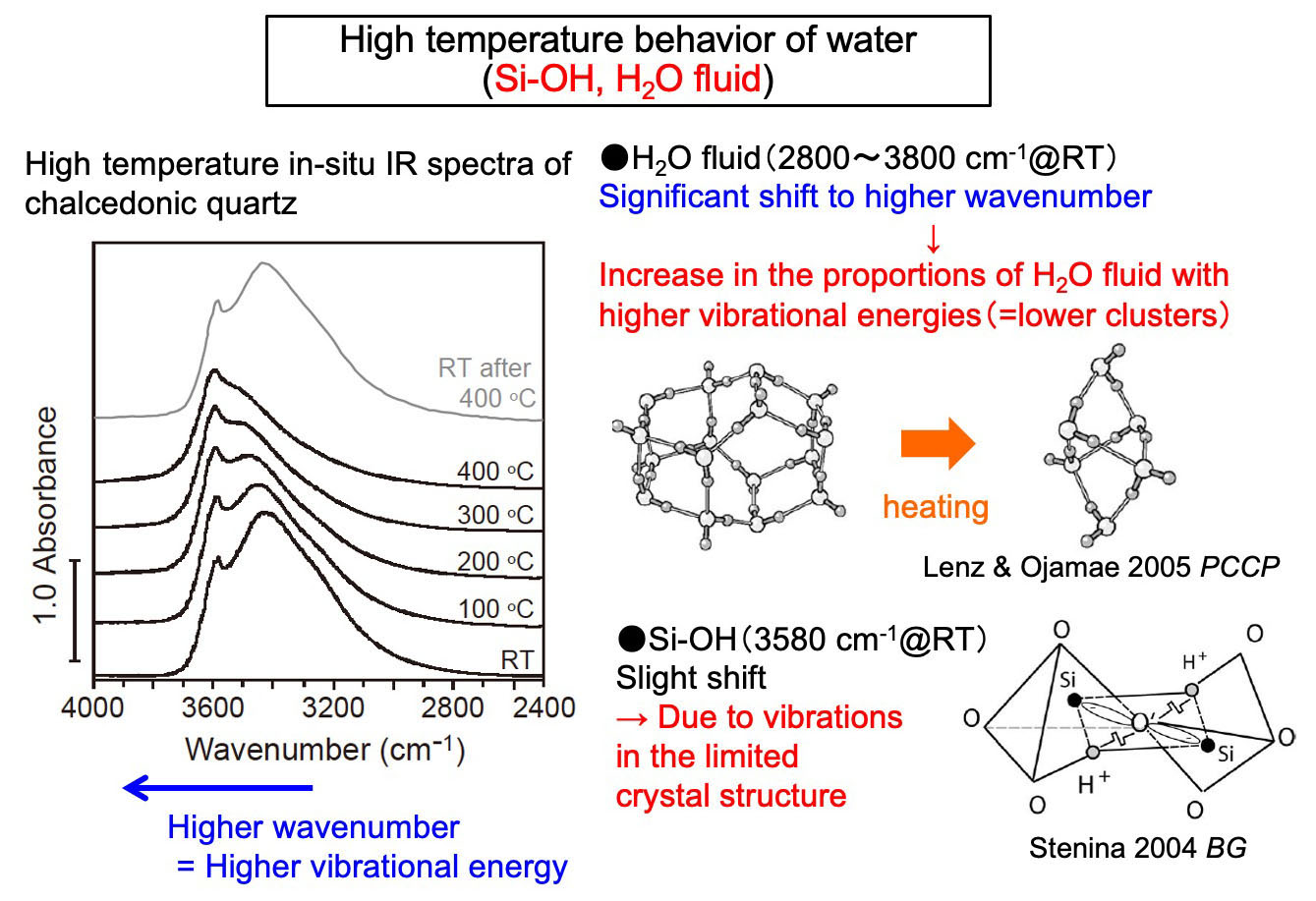
5. Evaluation of water diffusivity in rocks and minerals
Since water is ubiqitous in the crust, I evaluate water diffuvisity by experiments.